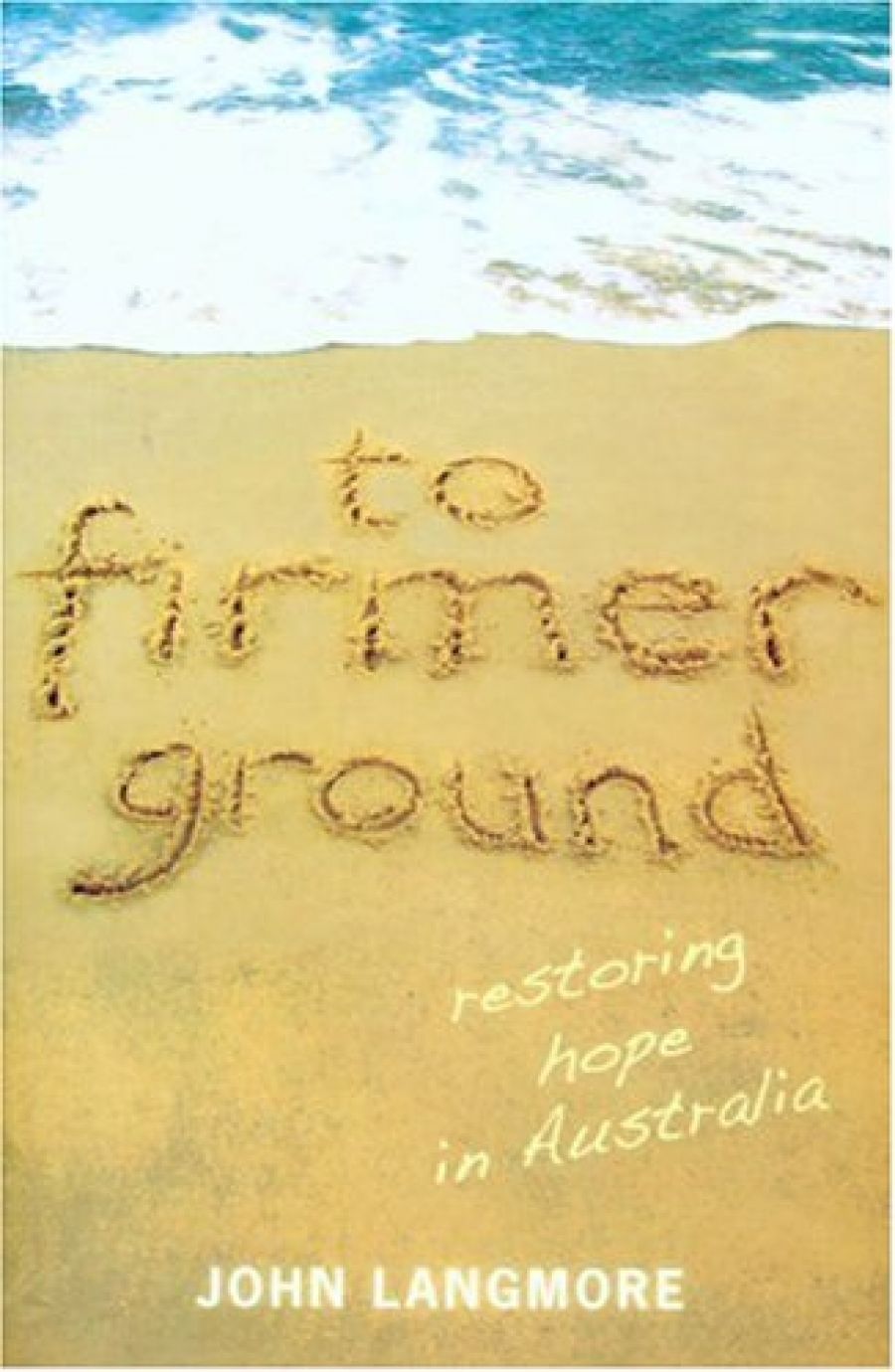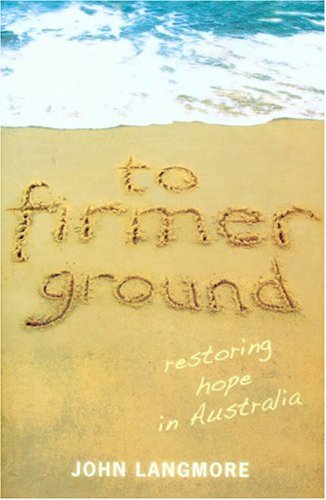
- Free Article: No
- Custom Article Title: Too Much Territory
- Review Article: Yes
- Article Title: Too Much Territory
- Online Only: No
- Custom Highlight Text:
Sometimes books date quickly. This is the fate of To Firmer Ground, which was published in October 2007, one month before the change of government in Canberra. Had it appeared one year earlier, or had Kevin Rudd not triumphed at the ballot box, then this book might have provided a timely critique of the policy failings of the Howard government. Six months later, with Kyoto ratified and the new parliament having apologised to the ‘stolen generations’ and amended WorkChoices in its first sitting week, this volume seems bogged in the past.
- Book 1 Title: To Firmer Ground
- Book 1 Subtitle: Restoring hope in Australia
- Book 1 Biblio: UNSW Press, $39.95 pb, 251 pp
- Book 1 Cover Small (400 x 600):

- Book 1 Cover (800 x 1200):

To Firmer Ground is also a slightly odd book. On the cover, former Labor MP John Langmore is credited as the sole author, but the acknowledgments and contents page reveal that key chapters or chapter segments were written by others. The chapter on environmental issues was written by Dr Nicola Henry, from La Trobe University, who also authored a section on reconciliation. Dr Andrew Scott, from RMIT, provided the chapter on ‘human security’, while the economic chapter includes a brief contribution by Professor Roy Green, from the Macquarie Graduate School of Management (with lessons from Ireland’s remarkable success in developing high-tech industries).
There is nothing wrong with co-authored texts, unless the result is intellectually or stylistically incoherent, and that is not the case with To Firmer Ground. But this collaboration reads more like the report of a think-tank than the passionate argument of a distinct narrative voice. This is not helped by an overuse of acronyms: do we need to have ‘the Australian Council of Superannuation Investors’ condensed to ‘ACSI’ when the organisation is only mentioned once in the text? There is plethora of dot points and a tendency to exhortation: ‘Protecting marine and estuarine biodiversity needs to be a national priority’; 'There need to be government policies to encourage more high-quality, well-paid part-time jobs.’ Such well-intentioned statements do little to illuminate the political path that might lead us to the firmer (and morally higher) ground that Langmore and his colleagues seek.
The opening chapter summarises the ‘state of Australia’ in 2007, and the first five pages are a counting of blessings. Langmore quotes poet Chris Wallace-Crabbe’s view of Australia as the ‘Great Good Place’, and celebrates our system of representative democracy, our universal education and health systems, our economic growth and relative affluence, and the success of multiculturalism. Then follow fifteen pages enumerating the many shortcomings of early twenty-first century Australia under the headings ‘Short-sightedness’, ‘Unfairness’, ‘Insecurity’, and ‘Social Disharmony’.
Chapter Two asks whether the aim of public policy should be to increase ‘individual income’ or to generate ‘wellbeing for all’. Langmore comes down firmly on the side of the latter and criticises Howard for relentlessly pursuing the former. The guiding principle of the book is that the ‘economy should be the servant of society rather than the reverse’ and that ‘economic activity is a means to the end of human wellbeing rather than an end in itself’.
Chapters Three to Seven deal in turn with environmental issues, human security, the future of the economy (particularly manufacturing), international relations (‘global security and justice’) and democracy before Langmore ends with a where-to-from-here conclusion.
The strength of To Firmer Ground is that is shows the interconnectedness of many of these problems. Entrenched unemployment (which still exists despite rosy official statistics) is linked to inadequate investment in skills and training, which in turn is linked to the long-term decline of the manufacturing industry, which exacerbates the current account deficit and increases our reliance on the resources sector for exports, which boosts the value of the Australian dollar, which weakens manufacturing base and costs jobs.
There are some good policy ideas, such as mandating a five-star energy efficient building code for the construction industry or creating government-backed affordable housing bonds to draw private investment into the provision of low-cost accommodation. Other ideas are tantalising but inadequately explored, such as the concept of ‘participation income’ (a kind of universal basic wage), while some are open to serious challenge. Should the federal government really aim to have Australian-made hybrid cars on the market by the end of the decade? How would the production cost and ecological footprint of such an initiative stack up against, say, investment to improve public transport and rail freight?
The argument for much greater investment in early childhood is put cogently and convincingly, and the multilateralist critique of recent Australian foreign and defence policy powerfully argued, reflecting Langmore’s post-political career as a senior United Nations official. But if you have read Tim Flannery and keep abreast of climate change issues in the media, then the chapter on the environment won’t provide new information on global warming. If you are interested in the intersection of welfare, work, and education, then you will find more to chew on in Brian Howe’s recent work (Weighing up Australian Values, 2007). If you are keen to renovate Australia’s political system, then George Williams’s lead essay in Griffith Review 19 (‘Thawing the Frozen Continent’, 2008) is more immediate and engaging.
To Firmer Ground provides an acute summary of the problems confronting the nation, problems that have not disappeared with the election of a Labor government. But in the end, it tries to cover too much territory and fails to surprise. It is a worthy book, but sadly, not a very exciting one.


Comments powered by CComment